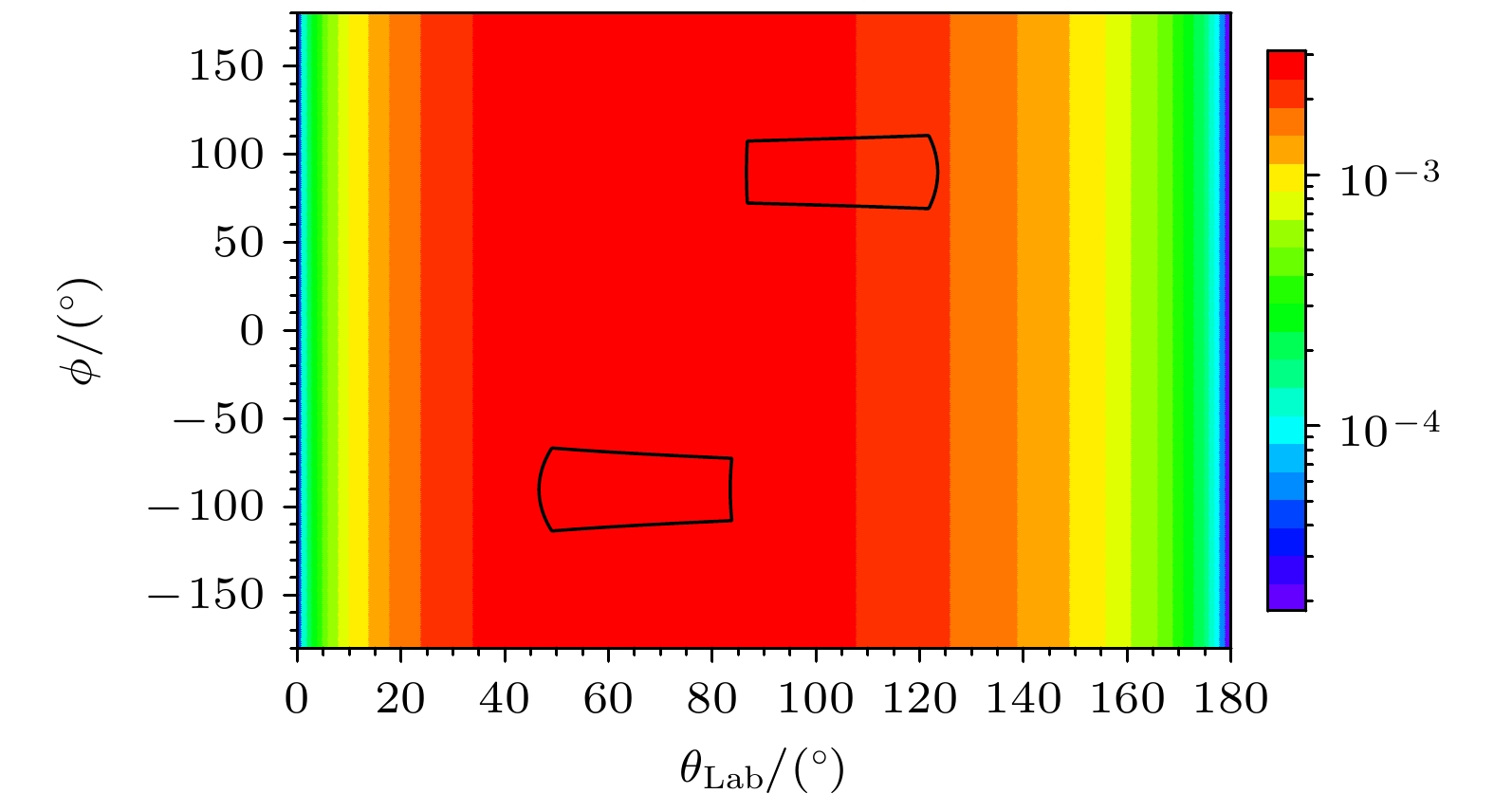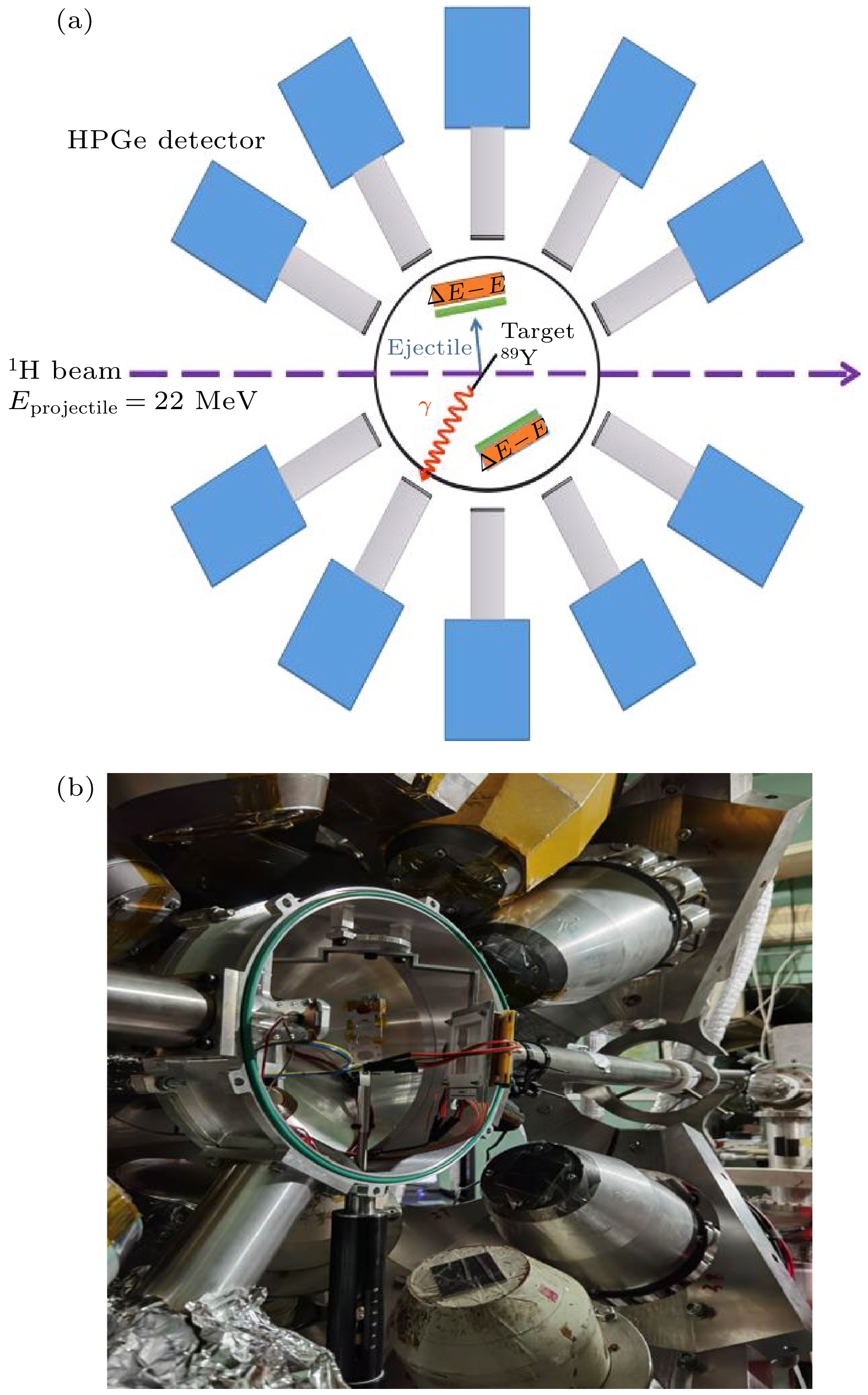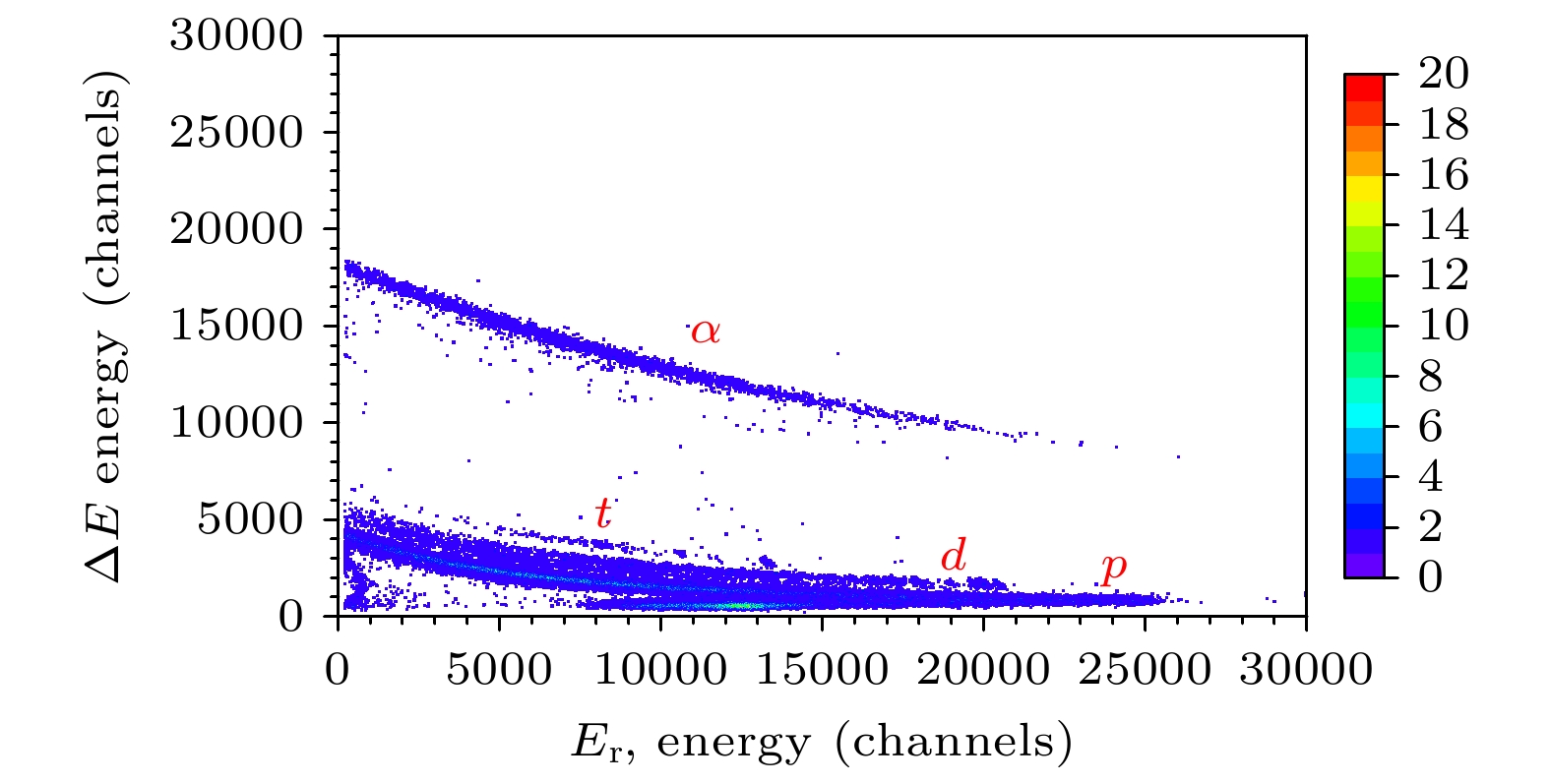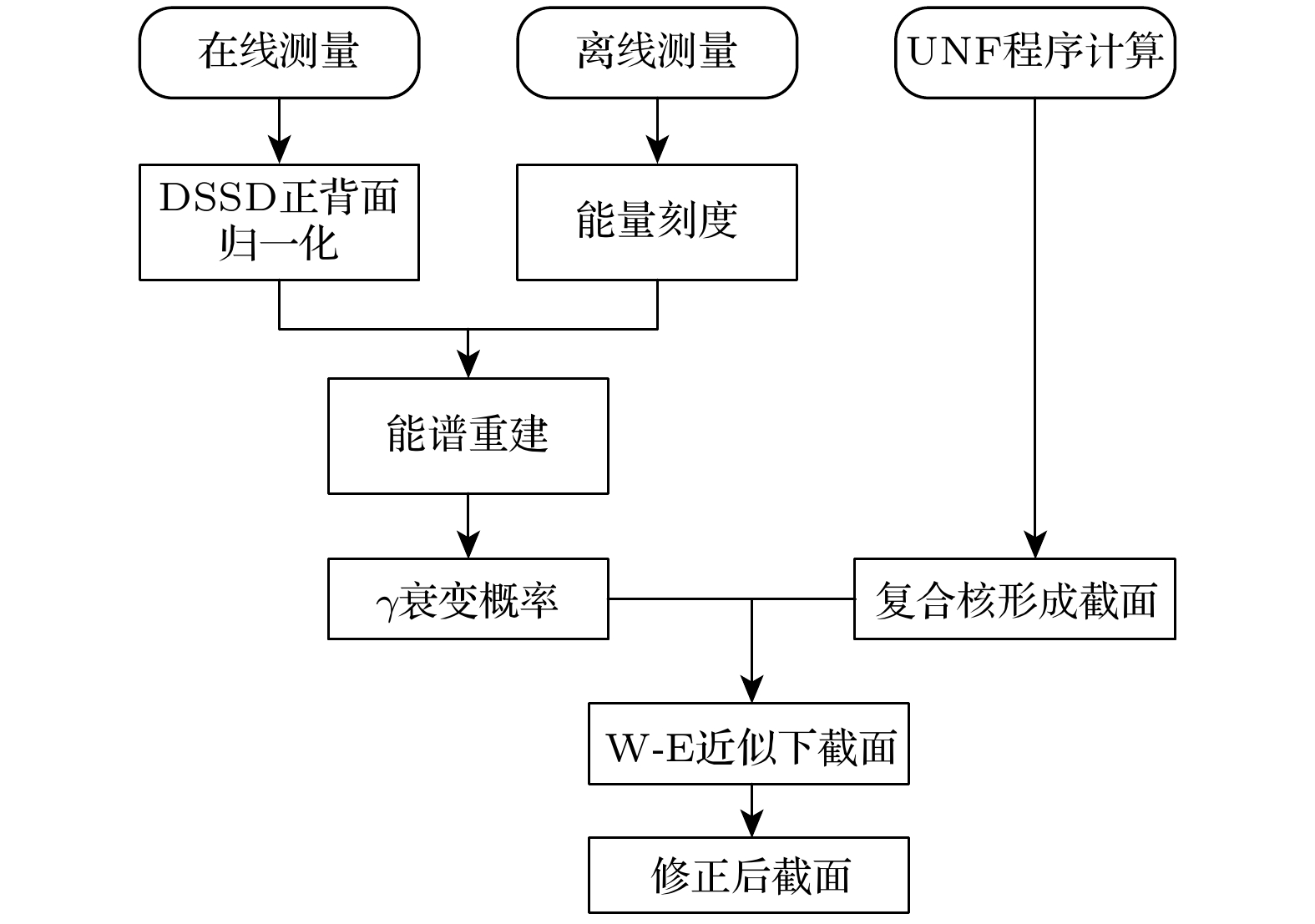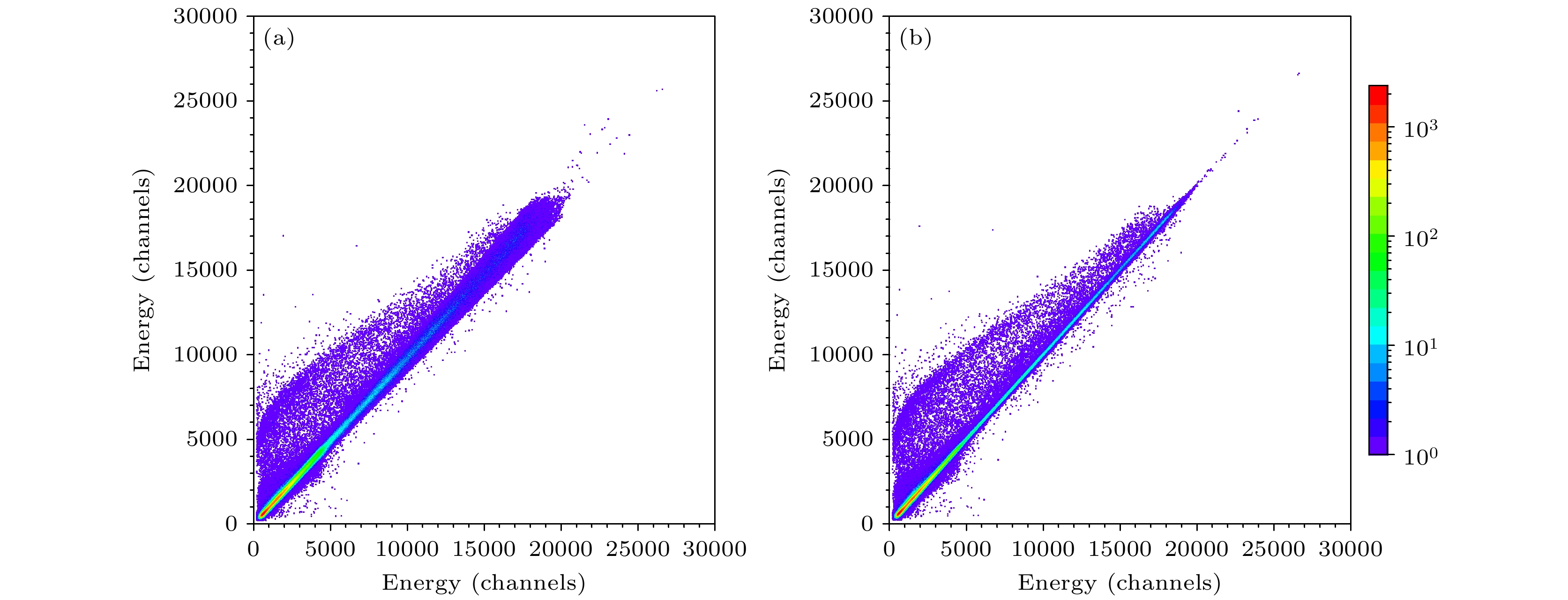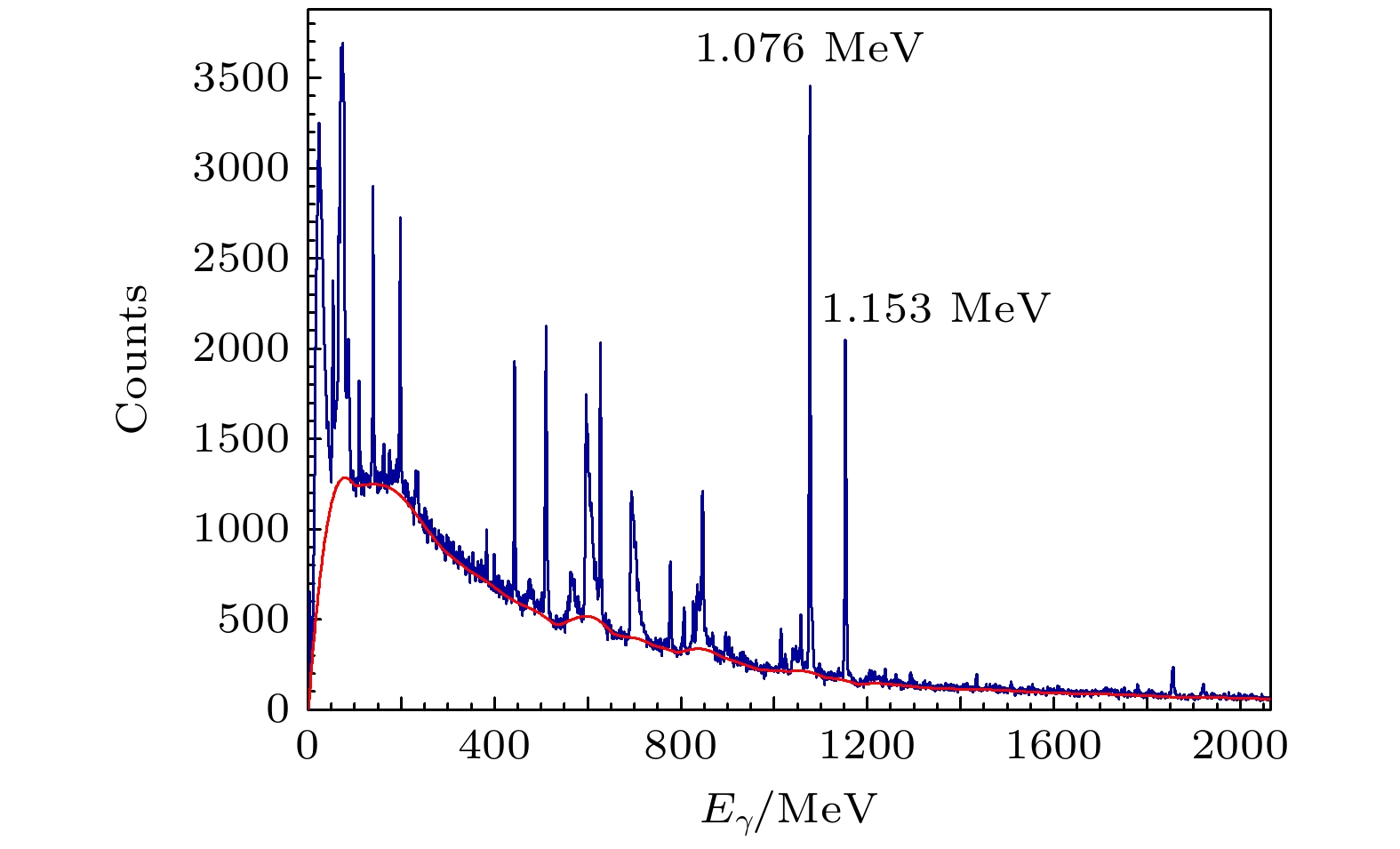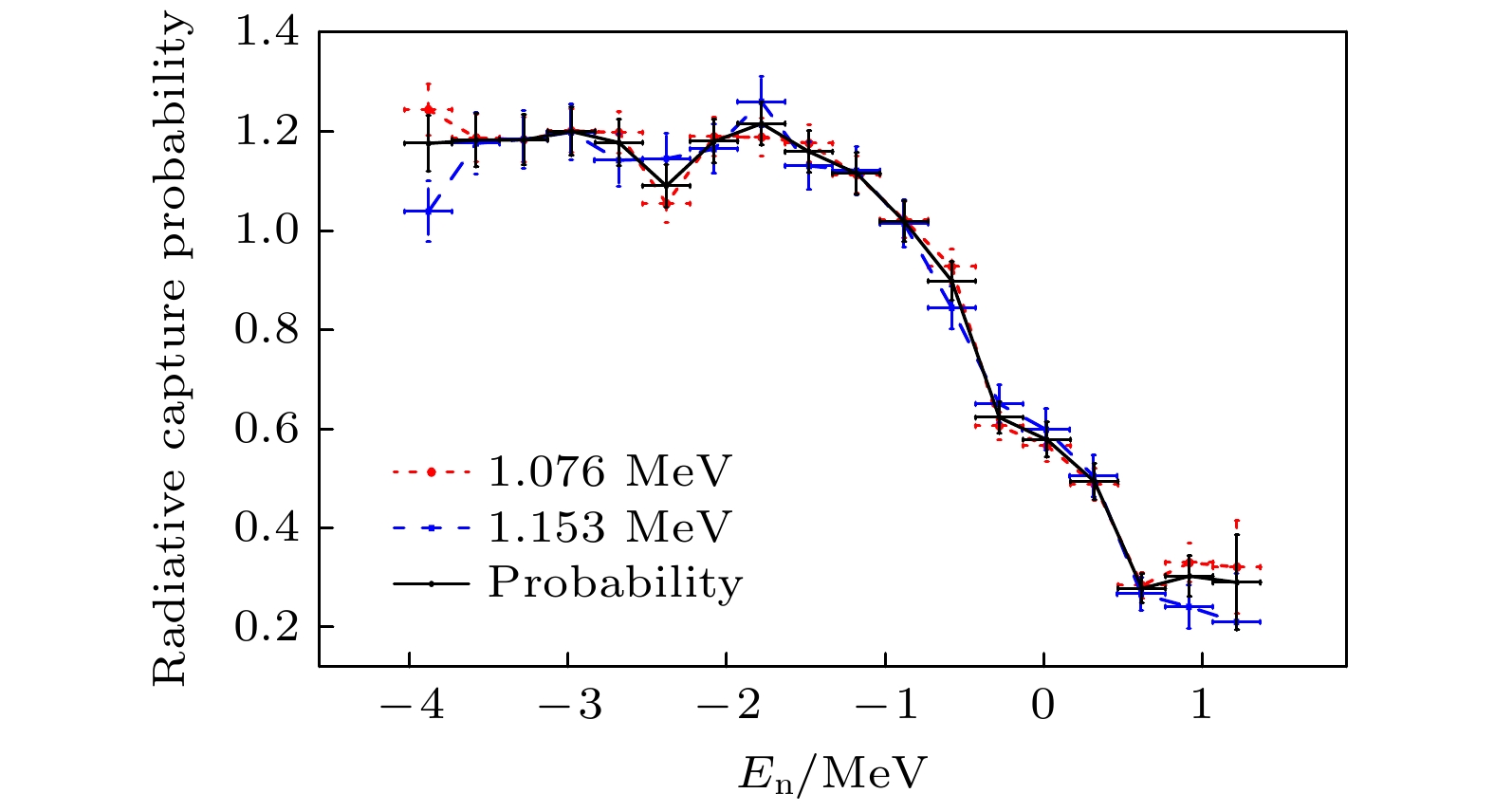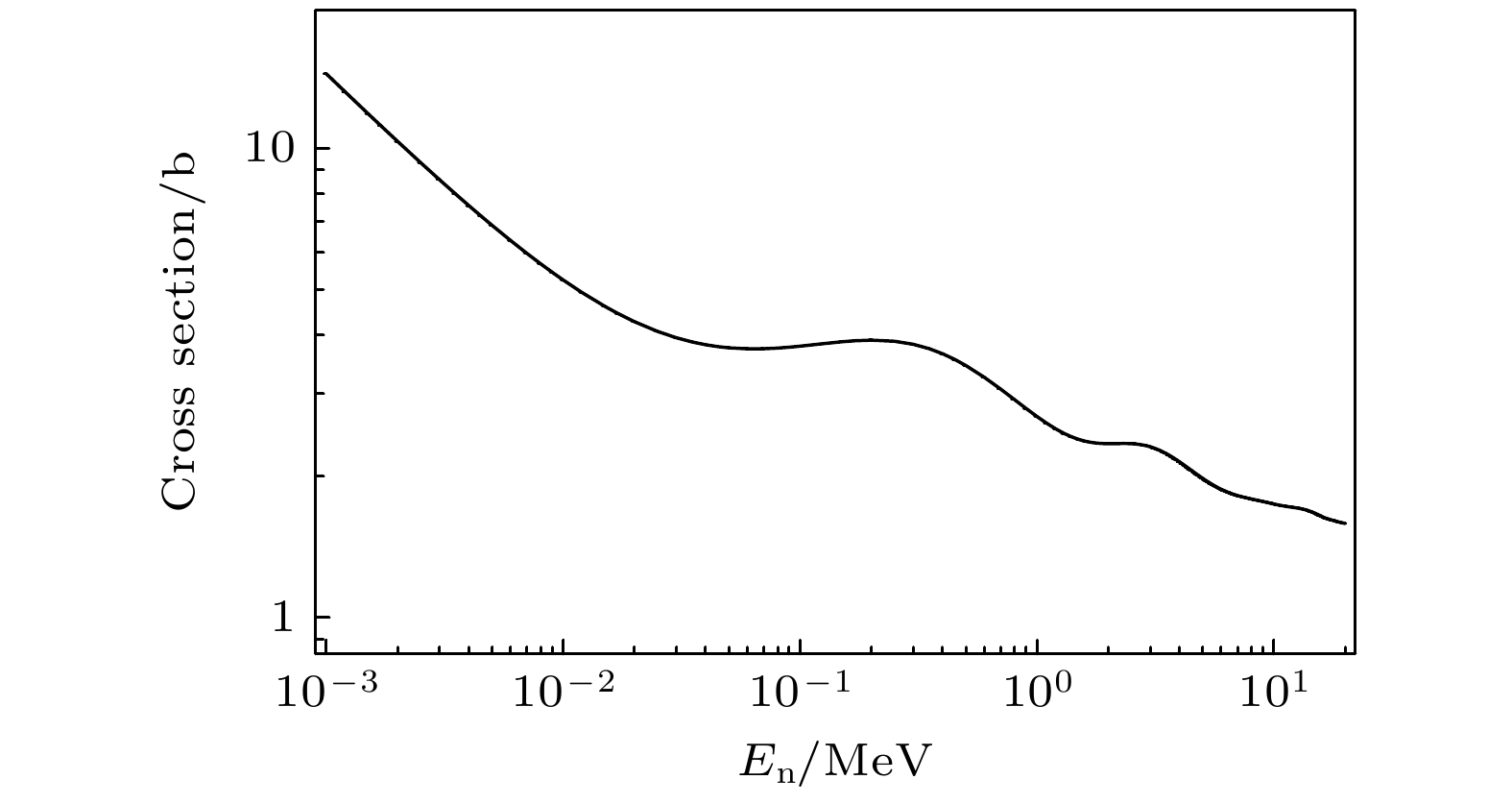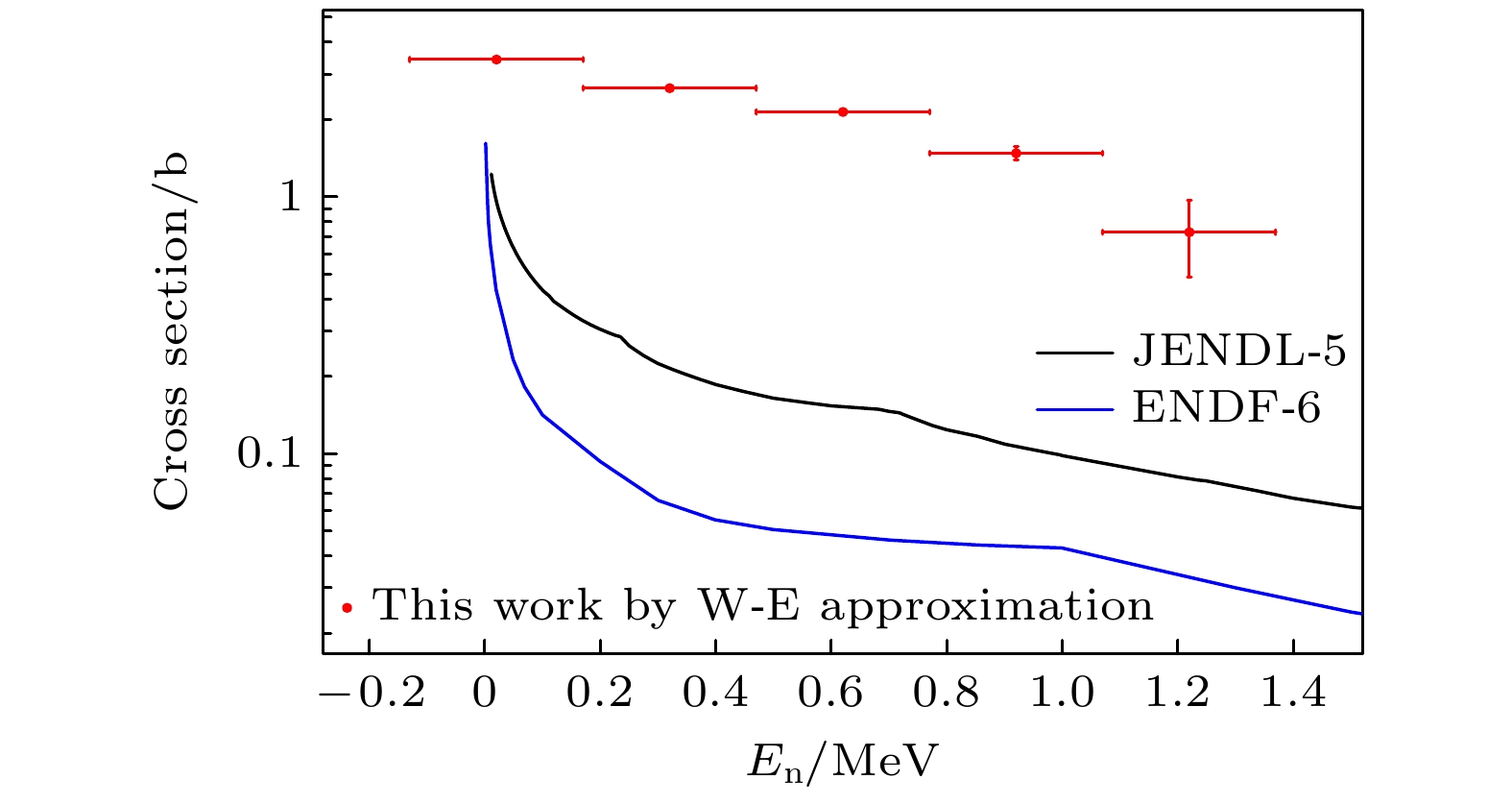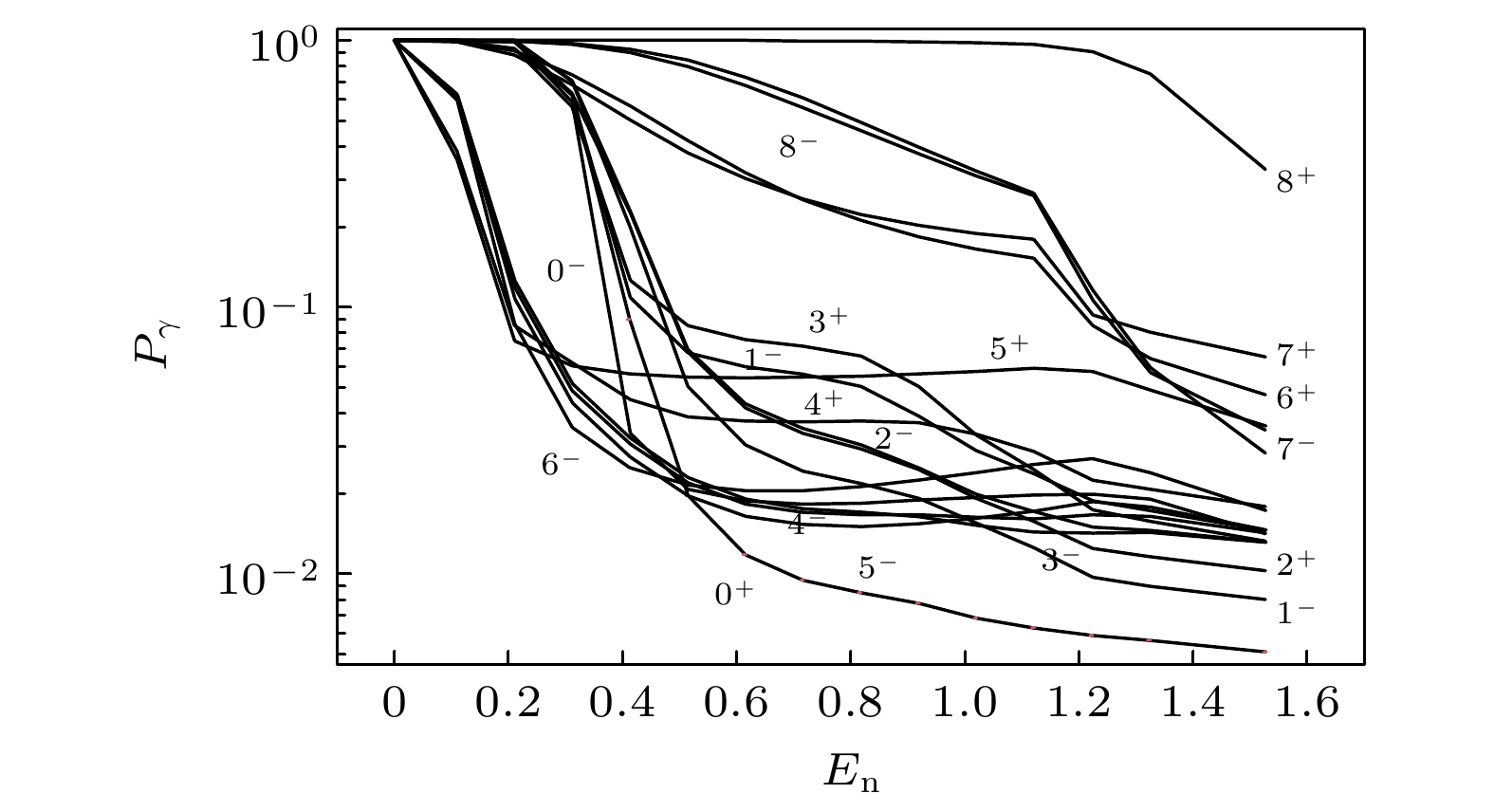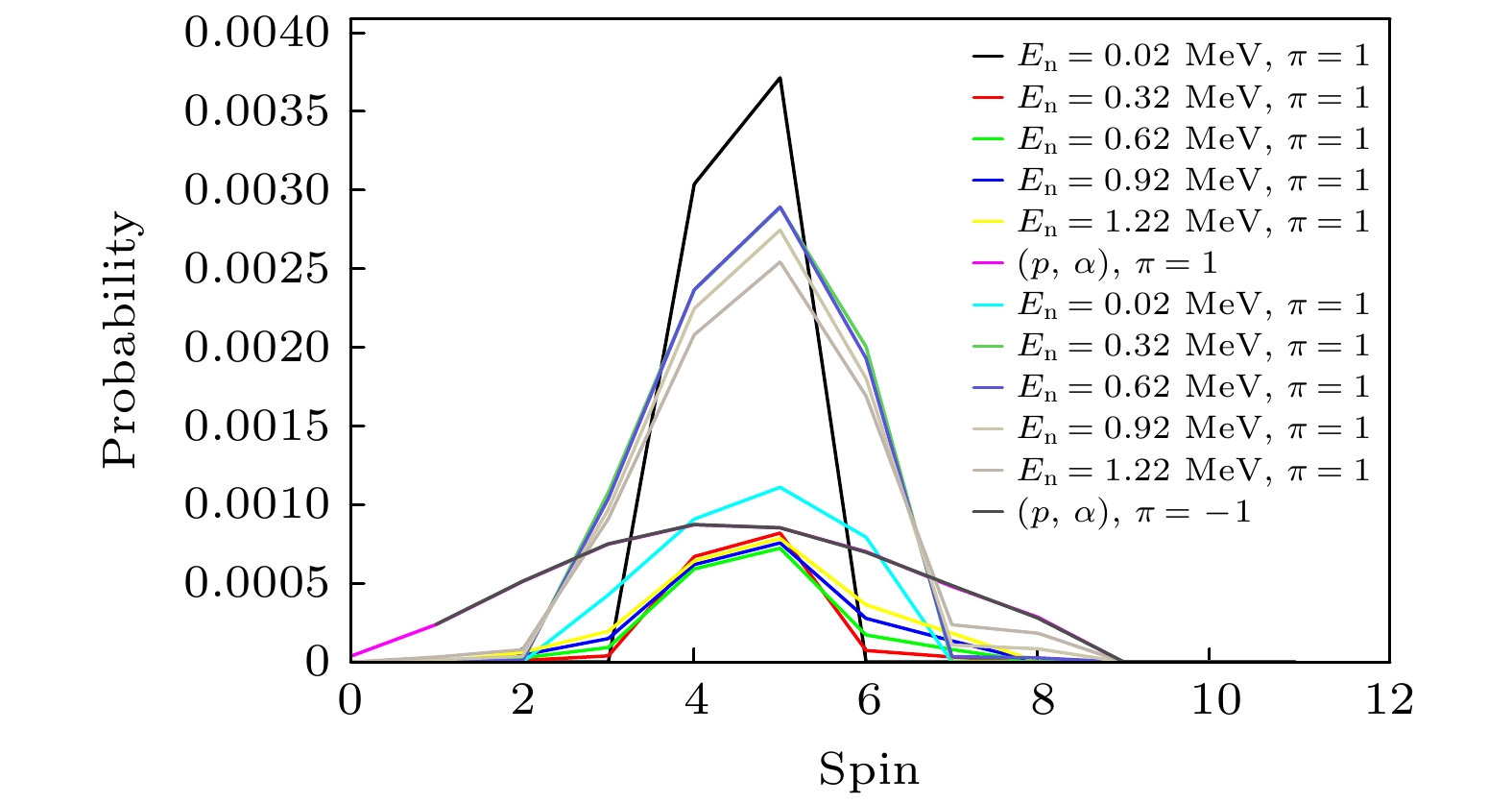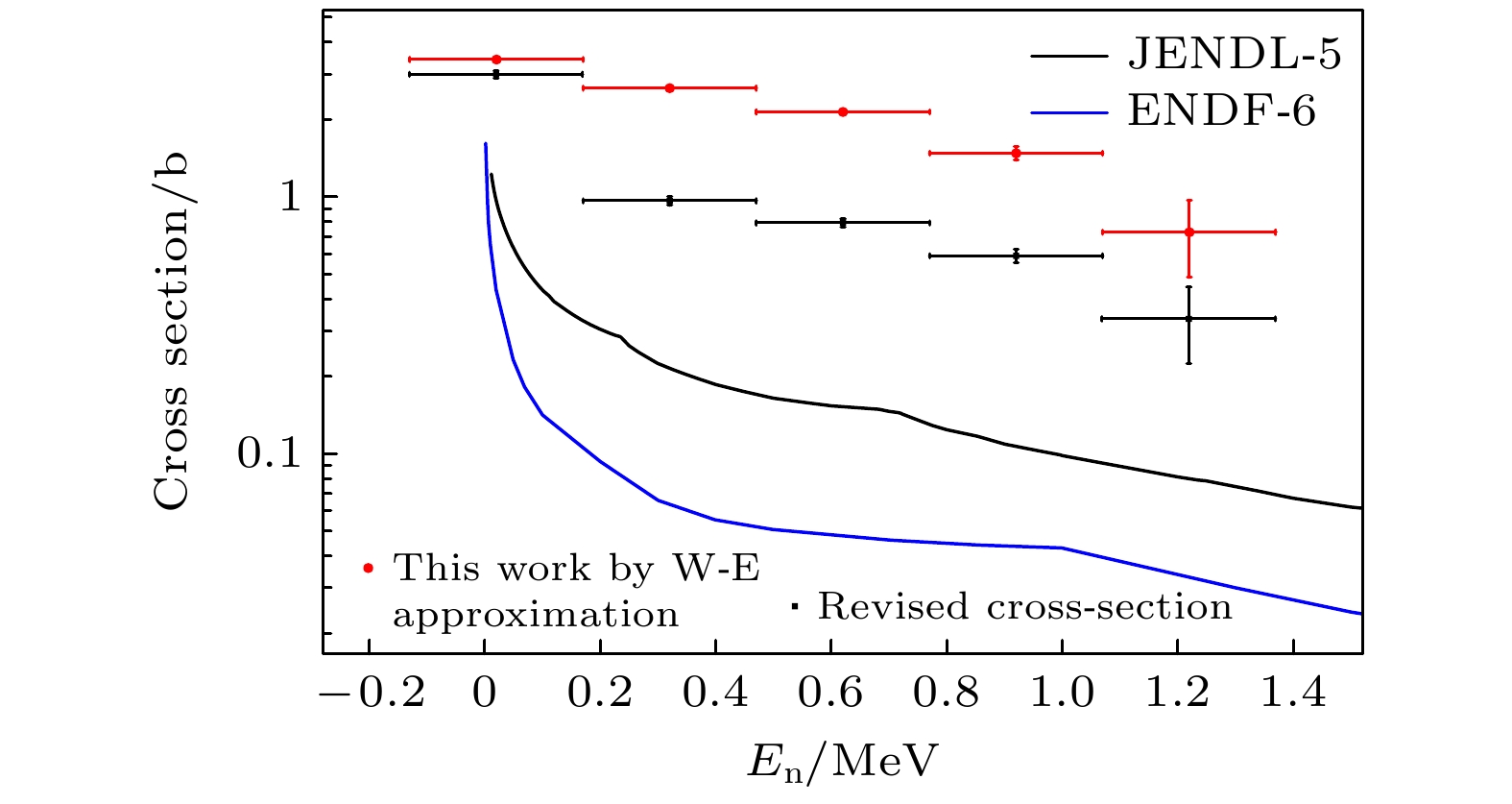-
Neutron capture cross sections, as important parameters for describing the probability of neutron-nucleus reactions, play a key role in multiple scientific fields. In astrophysics, neutron capture cross section data are essential elements for understanding stellar nucleosynthesis processes. In particular, in extreme environments such as supernova explosions and neutron star mergers, accurate neutron capture cross sections can reveal the secrets of heavy element formation. In the field of national security, neutron capture cross sections are crucial for the design of nuclear weapons and the security of nuclear materials. By accurately grasping the neutron capture characteristics of different nuclides, the nuclear reaction process can be optimized to ensure strategic security. In addition, in the simulation of nuclear power generation, neutron capture cross section data are the basis of reactor design and operational analysis. Through in-depth research on and precise measurements of neutron capture cross sections, the safety and efficiency of nuclear reactors can be improved, thus promoting the sustainable development of nuclear energy. At present, there is little research on the neutron capture cross sections of nuclides with half-lives of only a few years or even shorter, mainly due to the complexity of measurement techniques and the instability of the nuclides themselves. The neutron capture cross section data of these nuclides are crucial for reactor design, nuclear medicine applications, and nuclear waste treatment. Further research requires the development of more advanced detection techniques and theoretical models to accurately measure and predict their neutron capture behavior. The surrogate-reaction method, as an effective measurement means, plays an important role in studying reaction cross sections of short-lived nuclides. Its basic idea is to indirectly obtain the reaction cross section information of short-lived nuclides by measuring the specific particles emitted by stable nuclides. Specifically, when stable nuclides are bombarded by high-energy particles, nuclear reactions will occur and specific particles will be released. By accurately measuring the energies, angles, and numbers of these particles, the cross sections of short-lived nuclides in the corresponding reaction can be inferred. This method can not only overcome the technical difficulties in directly measuring short-lived nuclides, but also improve the accuracy and reliability of the measurement results, which provides important support for nuclear physics research. In addition, the surrogate-reaction method also shows broad application prospects in the fields of nuclear technology application and nuclear data assessment. The experiment is carried out on the Beijing HI-13 tandem accelerator at the China Institute of Atomic Energy. 89Y is bombarded with 22 MeV protons, and the 85Sr(n, γ) cross section is measured through the (p, αγ) reaction. The telescope array composed of silicon strip detectors can effectively identify the reaction products. By precisely measuring parameters such as the energies and angles of particles, the array can distinguish different nuclides, thus determining the outgoing particles. Combined with the γ-ray energy spectrum analysis of the HPGe detector, the (n, γ) reaction cross section data of 85Sr under the Weisskopf-Ewing (W-E) approximation are extracted. Due to the mismatch of the Jπ population between the existing alternative reactions and direct reactions, it is necessary to compensate for this mismatch and then correct the results. In order to obtain relatively reliable results, the Jπ population calculated by TALYS is used to revise the experimental data of the (n, γ) cross section. These results indicate that the cross section of 85Sr(n, γ) varies with neutron energy in a specific energy range, which is consistent with the trend of the existing international evaluation library data. This validates the effectiveness of cross section measurement as an alternative reaction method, thereby providing an important experimental basis for further exploring the nuclear reaction mechanism and nuclear data application. This method has reference significance for the cross section measurement of other nuclides. -
Keywords:
- neutron-capture cross section /
- surrogate reaction method /
- short-lived radioactive nuclei
-
图 3 各个探测器能量分辨率(以60Co的1332.5 keV特征峰的FWHM表征, G代表HPGe同轴型探测器, C代表Clover探测器, 后缀代表Clover探测器的模块编号)
Figure 3. Energy resolutions of various detectors (characterized by the FWHM of the 1332.5 keV characteristic peak of 60Co, where G represents HPGe coaxial detectors, C represents Clover detectors, and the suffix denotes the module number of the Clover detector).
图 4 真空靶室及实验设备布局 (a)两组ΔE – E望远镜在真空靶室中的示意图; (b) 靶室放置在Gamma探测器阵列的照片
Figure 4. The vacuum target chamber and experimental equipment layout: (a) Schematic representation of two sets of ΔE – E telescopes in vacuum target chamber; (b) physical diagram of the target chamber placed in the Gamma detector array.
图 13 (a) ${E_{\text{n}}}$= (0.62±0.15) MeV时对应的α粒子计数; (b) ${E_{\text{n}}}$= (0.62±0.15) MeV时的后角符合γ能谱中1.076 MeV特征峰以及本底(红线); (c) 扣除本底后1.076 MeV的特征峰, 绿线为所作的高斯拟合
Figure 13. (a) The α particle count corresponding to neutron energy point ${E_{\text{n}}}$= (0.62 ± 0.15) MeV; (b) the peak of 1.076 MeV gamma ray with neutron energy at ${E_{\text{n}}}$ = (0.62 ± 0.15) MeV and background obtained by using ROOT program (red line); (c) the peak of 1.076 MeV gamma ray after subtracting the background and the Gaussian fitting (green line).
图 14 归一化后的γ衰变概率随En的变化曲线(红线代表能量为1.076 MeV特征γ; 蓝线代表能量为1.153 MeV特征γ; 黑线为对各特征γ进行统计加权得到的γ衰变概率)
Figure 14. Normalized γ decay probability as a function of neutron energy (red line represents characteristic γ with energy 1.076 MeV; blue line represents characteristic γ with energy 1.153 MeV; black line shows γ decay probability obtained by statistical weighting of each characteristic γ).
-
[1] Arlandini C, Käppeler F, Wisshak K, Gallino R, Lugaro M, Busso M, Straniero O 1999 Astrophys. J. Lett 525 886
 Google Scholar
Google Scholar
[2] Boutoux G, Jurado B, Méot V, Roig O, Mathieu L, Aïche M, Barreau G, Capellan N, Companis I, Czajkowski S, Schmidt K H, Burke J T, Bail A, Daugas J M, Faul T, More P l, Pillet N, Théroine C, Derkx X, Sérot O, Matéa I, Tassan-Got L 2010 Phys. Lett. B 692 297
 Google Scholar
Google Scholar
[3] Arcones A, Bardayan D, Beers T, Bernstein L, Blackmon J, Messer B, Brown B, Brown E, Brune C, Champagne A, Chieffi A, Couture A, Danielewicz P, Diehl R, El-Eid M, Escher J, Fields B, Fröhlich C, Herwig F, Hix W, Iliadis C, Lynch W, McLaughlin G, Meyer B, Mezzacappa A, Nunes F, O'Shea B, Prakash M, Pritychenko B, Reddy S, Rehm E, Rogachev G, Rutledge R 2017 Prog. Part. Nucl. Phys. 94 1
 Google Scholar
Google Scholar
[4] Mumpower M R, Surman R, McLaughlin G C, Aprahamian A 2015 Prog. Part. Nucl. Phys. 86 86
[5] H. Schatz 2016 J. Phys. G: Nucl. Part. Phys 43 064001
 Google Scholar
Google Scholar
[6] Reifarth R, Litvinov Y. A 2014 Phys. Rev. ST Accel. Beams 17 014701
 Google Scholar
Google Scholar
[7] Ratkiewicz A, Cizewski J A, Pain S D, Adekola A S, Burke J T, Casperson R J, Fotiades N, McCleskey M, Burcher S, Shand C M, Austin R A E, Baugher T, Carpenter M P, Devlin M, Escher J, Hardy S, Hatarik R, Howard M E, Hughes R O, Jones K L, Kozub R L, Lister C J, Manning B, O'Donnell J M, Peters W A, Ross T J, Scielzo N D, Seweryniak D, Zhu S 2015 15th International Symposium on Capture Gamma Ray Spectroscopy and Related Topics Dresden, Germany, Auguest 25-29, 2015 p93
[8] Cramer J D, Britt H C 1970 Nucl. Sci. Eng. 41 177
 Google Scholar
Google Scholar
[9] Britt H C, Wilhelmy J B 1979 Nucl. Sci. Eng. 72 222
 Google Scholar
Google Scholar
[10] Boyer S, Dassié D, Wilson J N, Aïche M, Barreau G, Czajkowski S, Grosjean C, Guiral A, Haas B, Osmanov B, Aerts G, Berthoumieux E, Gunsing F, Theisen Ch, Thiollière N, Perrot L 2006 Nucl. Phys. A 775 175
 Google Scholar
Google Scholar
[11] Allmond J, Bernstein L, Beausang C, Phair L, Bleuel D, Burke J, Escher J, Evans K, Goldblum B, Hatarik R, Jeppesen H, Lesher S, Mcmahan M, Rasmussen J, Scielzo N, Wiedeking M 2009 Phys. Rev. C 79 054610
 Google Scholar
Google Scholar
[12] 马南茹, 林承键, 贾会明, 徐新星, 杨峰, 杨磊, 孙立杰, 王东玺, 刘祖华, 张焕乔 2017 原子核物理评论 34 351
 Google Scholar
Google Scholar
Ma N R, Lin C J, Jia H M, Xu X X, Yamg F, Yang L, Sun L J, Wang D X, Liu Z H, Zhang H Q 2017 Nucl. Phys. Rev. 34 351
 Google Scholar
Google Scholar
[13] Yan S Q, Li Z H, Wang Y B, Nishio K, Lugaro M, Karakas A I, Makii H, Mohr P, Su J, Li Y J, Nishinaka I, Hirose K, Han Y L, Orlandi R, Shen Y P, Guo B, Zeng S, Lian G, Chen Y S, Liu W P 2017 Astrophys. J. 848 98
 Google Scholar
Google Scholar
[14] Yan S, Li Z H, Wang Y B, Nishio K, Makii H, Su J, Li Y J, Nishinaka I, Hirose K, Han Y L, Orlandi R, Shen Y P, Guo B, Zeng S, Lian G, Chen Y S, Bai X X, Qiao L H, Liu W 2016 Phys. Rev. C 94 015804
 Google Scholar
Google Scholar
[15] Yan S Q, Li X Y, Nishio K, Lugaro M, Li Z H, Makii H, Pignatari M, Wang Y B, Orlandi R, Hirose K, Tsukada K, Mohr P, Li G S, Wang J G, Gao B S, Han Y L, Guo B, Li Y J, Shen Y P, Sato T K, Ito Y, Suzaki F, Su J, Yang Y Y, Wang J S, Ma J B, Ma P, Bai Z, Xu S W, Ren J, Fan Q W, Zeng S, Han Z Y, Nan W, Nan W K, Chen C, Lian G, Hu Q, Duan F F, Jin S Y, Tang X D, Liu W P 2021 Astrophys. J. 919 84
 Google Scholar
Google Scholar
[16] Escher J, Harke J T, Hughes R O, Scielzo N D, Casperson R J, Ota S, Park H I, Saastamoinen A, Ross T J 2018 Phys. Rev. Lett. 121 052501
 Google Scholar
Google Scholar
[17] Hauser W, Feshbach H 1952 Phys. Rev. 87 366
 Google Scholar
Google Scholar
[18] Weisskopf V F, Ewing D H 1940 Phys. Rev. 57 472
 Google Scholar
Google Scholar
[19] Escher J, Dietrich F. S 2006 Phys. Rev. C 74 054601
 Google Scholar
Google Scholar
[20] Chiba S, Iwamoto O 2010 Phys. Rev. C 81 044604
 Google Scholar
Google Scholar
[21] Escher J, Harke J T, Dietrich F S, Scielzo N D, Thompson I J, Younes W 2012 Rev. Mod. Phys. 84 353
 Google Scholar
Google Scholar
[22] Lesher S R, Phair L, Bernstein L A, Bleuel D L, Harke J T, Church J A, Fallon P, Gibelin J, Scielzo N D, Wiedeking M 2010 Nucl. Instrum. Methods Phys. Res. Sect. A 621 286
 Google Scholar
Google Scholar
[23] 洪锐, 李聪博, 李会东, 郑云, 吴晓光, 李天晓, 李韵秋, 吴鸿毅, 郑敏, 赵子豪, 贺子阳, 李金泽, 李广顺, 郭成宇, 倪磊, 周振翔, 贺创业, 刘伏龙, 周小红, 柳敏良, 张玉虎, 王守宇, 王硕, 竺礼华 2024 原子核物理评论 41 244
 Google Scholar
Google Scholar
Hong R, Li C B, Li H D, Zheng Y, Wu X G, Li T X, Li Y Q, Wu H Y, Zheng M, Zhao Z H, He Z Y, Li J Z, Li G S, Guo C Y, Ni L, Zhou Z X, He C Y, Liu F L, Zhou X H, Liu M L, Zhang Y H, Wang S Y, Wang S, Zhu L H 2024 Nucl. Phys. Rev 41 244
 Google Scholar
Google Scholar
[24] Reese M, Gerl J, Golubev P, Pietralla N 2015 Nucl. Instrum. Methods Phys. Res. Sect. A 779 63
 Google Scholar
Google Scholar
[25] Tarasov O, Bazin D 2004 Nucl. Phys. A 746 411
 Google Scholar
Google Scholar
[26] Koning A J, Hilaire S, Duijvestijn M C 2023 Eur. Phys. J. A 59 131
 Google Scholar
Google Scholar
[27] Boutoux G 2011 Ph. D. Dissertation (Bordeaux: University of Bordeaux
[28] Brun R, Rademakers F, 1997 Nucl. Instrum. Methods Phys. Res. Sect. A 389 81
 Google Scholar
Google Scholar
[29] Zhang J S 2002 Nucl. Sci. Eng. 142 207
 Google Scholar
Google Scholar
[30] Forssén C, Dietrich F S, Escher J, Hoffman R D, Kelley K 2007 Phys. Rev. C 75 055807
 Google Scholar
Google Scholar
[31] Younes W, Britt H. C 2003 Phys. Rev. C 67 024610
 Google Scholar
Google Scholar
[32] Galés S, Hourani E, Fortier S, Laurent H, Maison J M, Schapira J P 1977 Nucl. Phys. A 288 221
 Google Scholar
Google Scholar
[33] Hisamochi K, Iwamoto O, Kisanuki A, Budihardjo S, Widodo S, Nohtomi A, Uozumi Y, Sakae T, Matoba M 1993 Nucl. Phys. A 564 227
 Google Scholar
Google Scholar
[34] Duhamel-Chretien G, Perrin G, Perrin C, Comparat V V, Gerlic E, Galès S, Massolo C P 1991 Phys. Rev. C 43 1115
[35] Duhamel G, Perrin G, Didelez J P, Gerlic E, Langevin-Joliot H, Guillot J, Van de Wiele J 1981 J. Phys. G: Nucl. Phys. 7 1415
 Google Scholar
Google Scholar
[36] Hilaire S, Lagrange C, Koning A J 2003 Ann. Phys. 306 209
 Google Scholar
Google Scholar
Metrics
- Abstract views: 261
- PDF Downloads: 5
- Cited By: 0














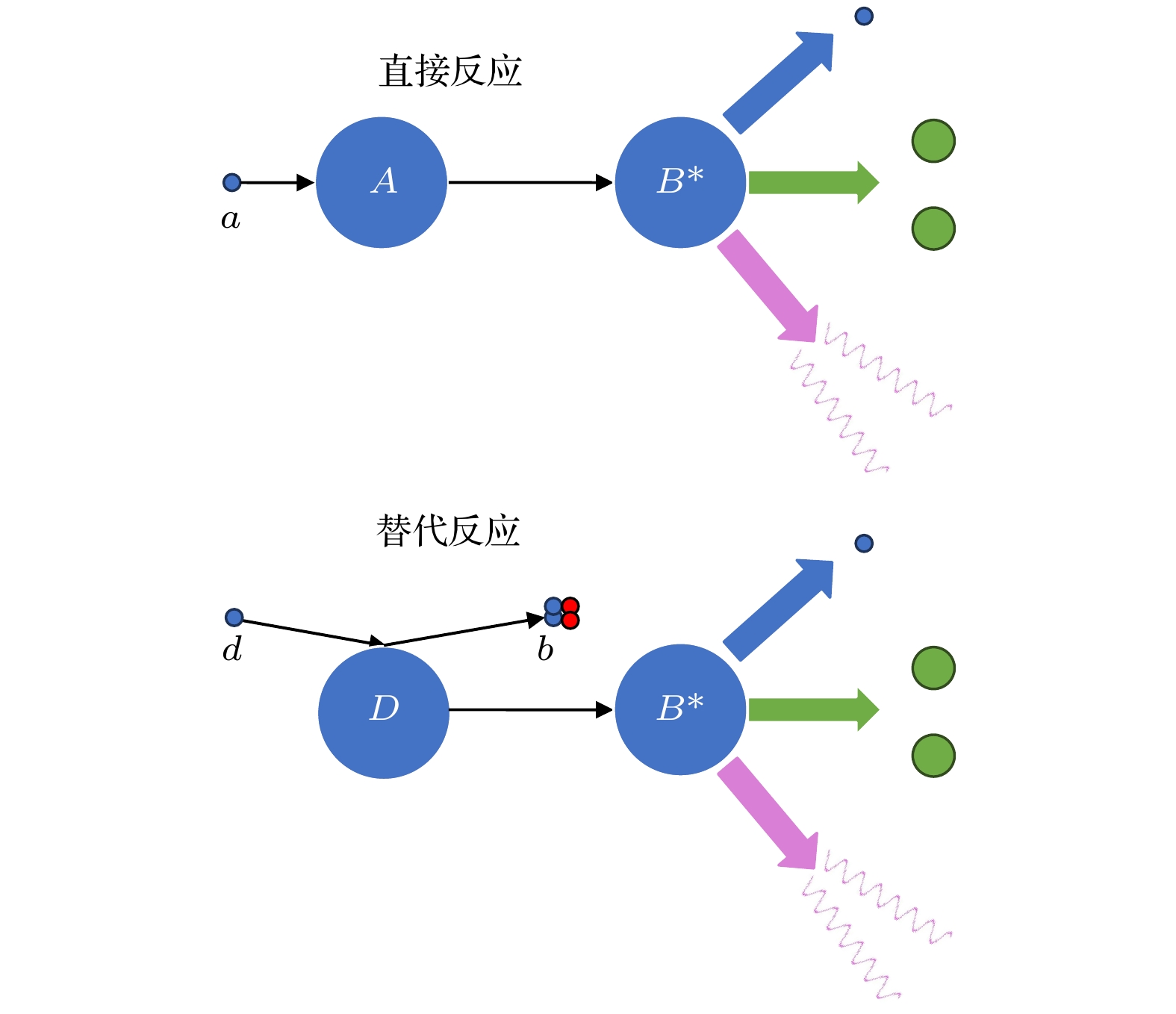
 DownLoad:
DownLoad:
